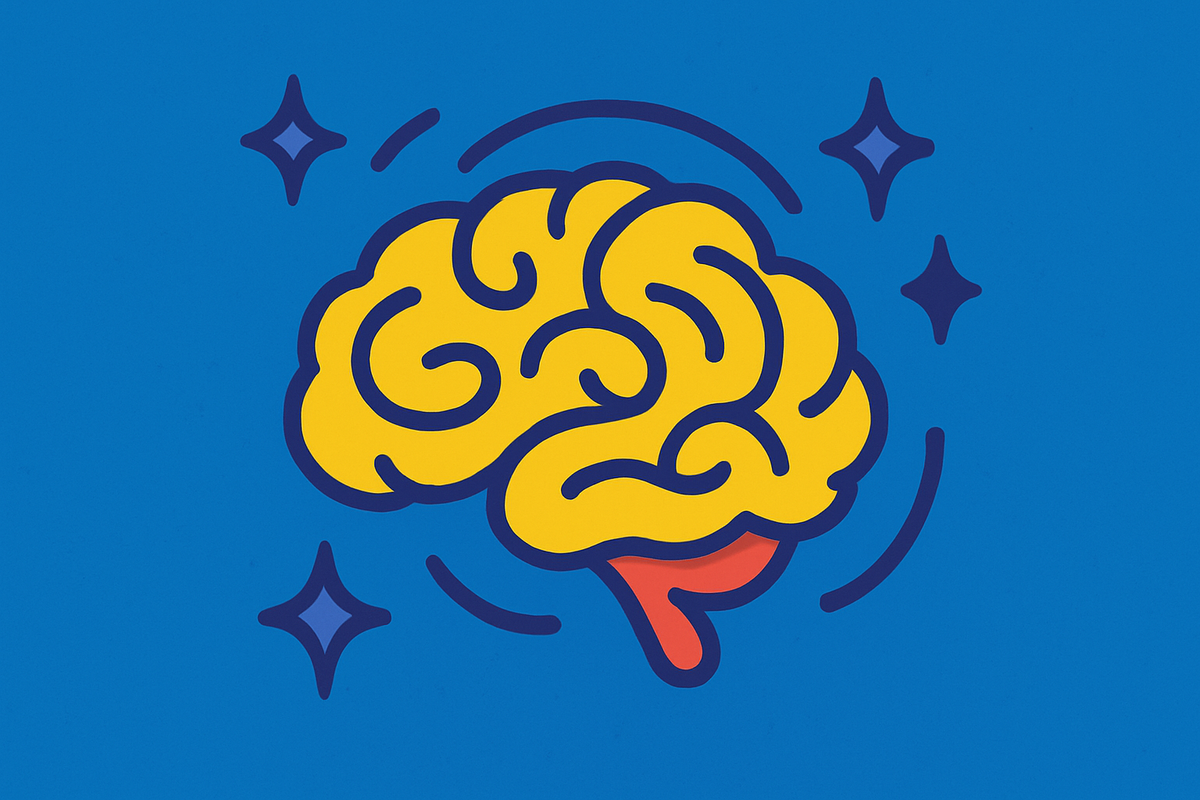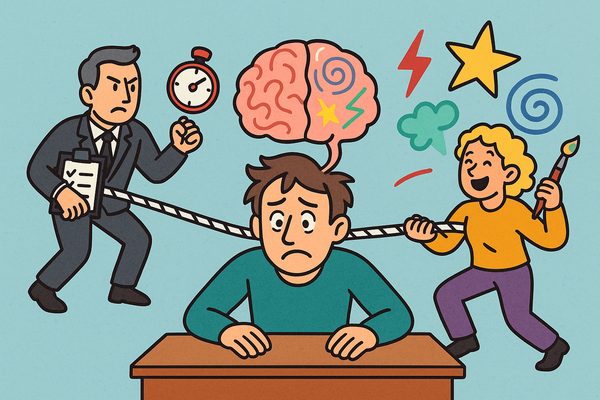This Week in ADHD News

Week ending July 4, 2025
Welcome back to This Week in ADHD News, where we cut through the noise to bring you the developments that actually matter for adults navigating ADHD. This week, we’re diving into some significant research findings, workplace trends, and policy developments that could directly impact your daily life.
🔬 Women with ADHD Face Triple Risk for Severe PMS
New research from Queen Mary University of London is shedding light on a connection that many women have suspected but rarely see discussed: the link between ADHD and severe premenstrual symptoms.
The findings: Women with a clinical ADHD diagnosis were over three times more likely to meet criteria for premenstrual dysphoric disorder (PMDD) than those without ADHD. For women with high levels of ADHD symptoms (even without a formal diagnosis), the risk was over four times higher.
Why this matters: If you’re a woman with ADHD who feels like your symptoms get significantly worse before your period, you’re not imagining it. PMDD isn’t just “bad PMS” — it’s a serious condition that can include severe mood changes, anxiety, and physical symptoms that interfere with daily functioning.
What you can do: The researchers suggest that women with ADHD, especially those who also have anxiety or depression, should be screened for PMDD. This is something you can bring up with your healthcare provider, particularly if you notice your ADHD symptoms intensifying cyclically.
Adult ADHD Diagnoses: The Post-Pandemic Surge
Recent data reveals a fascinating trend: while adult ADHD diagnoses dropped significantly from 2016 to 2020, they surged from 2020 to 2023. This follows the same pattern as our growing understanding that about 14% of adults may have undiagnosed ADHD, with women disproportionately missed.
The context: Current estimates suggest 15.5 million U.S. adults have an ADHD diagnosis, with about half receiving their diagnosis in adulthood. That’s roughly 6% of all adults — a significant jump from previous estimates.
What’s driving this: Increased awareness, reduced stigma, and expanded access to telehealth services during the pandemic likely contributed to more people seeking and receiving diagnoses. The pandemic also revealed ADHD symptoms for many people who had been masking or compensating successfully in their previous routines.
The takeaway: If you’ve been questioning whether you might have ADHD, you’re part of a much larger conversation happening right now. The increase in diagnoses doesn’t mean ADHD is being “over-diagnosed” — it more likely reflects that we’re finally catching up to the real prevalence, especially among women and adults.
Medication Shortages Continue to Impact Most Adults
The medication shortage crisis isn’t over. About one-third of adults with ADHD take stimulant medication, and a staggering 71.5% of them had difficulty filling their prescription in 2023 because medications were unavailable.
The reality check: If you’ve spent the last few years calling multiple pharmacies, switching between generic brands, or rationing your medication, you’re unfortunately not alone. This isn’t a “you” problem — it’s a systemic supply chain issue affecting millions.
What’s being done: The DEA has increased manufacturing quotas for 2024, though 2025 limits haven’t been set yet. However, the shortage stems from multiple factors including manufacturing issues, increased demand, and regulatory constraints.
Practical advice: If you’re affected by shortages, consider:
- Building a relationship with a consistent pharmacy that can notify you when your medication arrives
- Asking your doctor about alternative formulations or dosing schedules
- Keeping documentation of your prescription history for insurance purposes
- Never sharing or selling medication — it’s dangerous and illegal
Telehealth Under Threat: What You Need to Know
Here’s the policy update that could directly impact your care: current telehealth regulations that expanded during COVID are set to expire December 31, 2025, unless the DEA extends them or Congress intervenes. About 46% of adults with ADHD have used telehealth services.
Why this matters: Telehealth has been a game-changer for ADHD care, removing barriers like:
- Geographic distance to specialists
- Time off work for appointments
- Childcare challenges for parents
- Accessibility issues for people with disabilities
The research backing telehealth: New research from Mass General Brigham found that telehealth-prescribed ADHD medications don’t increase the overall risk of substance use disorders compared to in-person prescribing. This addresses one of the main concerns critics have raised.
What you can do: If telehealth has been essential for your ADHD care, consider:
- Contacting your representatives about the importance of telehealth access
- Documenting how telehealth has improved your care quality and consistency
- Following advocacy organizations like CHADD for updates on policy developments
Like what you’re reading? Get weekly ADHD news, tools, and creative strategies delivered straight to your inbox.
Workplace Accommodations: More Recognition, Still Resistance
Recent data suggests that 98% of adults with ADHD now recognize positive aspects of having ADHD, including creativity and outside-the-box thinking. However, about 87% still face career struggles.
The disconnect: While awareness of ADHD strengths is growing, workplace accommodations remain inconsistent. Research shows that workplaces offering accommodations — such as flexible schedules and task prioritization tools — amplify ADHD strengths while reducing challenges.
What’s working: Organizations are increasingly recognizing that neurodivergent employees bring valuable perspectives. Companies that provide accommodations report benefits including increased innovation, better problem-solving, and higher employee retention.
If you’re considering accommodations: Remember that under the ADA, employers with 15+ employees must provide reasonable accommodations. This might include flexible schedules, quiet workspaces, or project management tools. Check out our guide on navigating workplace accommodations for practical steps.
The Research Pipeline: What’s Coming
Looking ahead, 2025 promises continued focus on personalized ADHD treatment approaches. The “one-size-fits-all” treatment model is declining as research supports individualized interventions based on symptoms, life stages, and biological factors.
On the horizon:
- More research on hormonal influences on ADHD symptoms
- Development of formal guidelines for adult ADHD diagnosis and treatment
- Continued expansion of digital health solutions and telehealth integration
- Greater focus on ADHD across the female lifespan
The Bottom Line
This week’s news reinforces something we’ve been saying: ADHD looks different than we once thought, affects more people than we previously recognized, and requires more nuanced approaches than traditional medicine has offered.
Whether it’s the connection between ADHD and hormonal cycles, the ongoing challenges with medication access, or the fight to maintain telehealth options, these developments aren’t just statistics — they’re factors that impact your daily life and long-term wellbeing.
The increasing recognition of adult ADHD, particularly in women, is validating for those who’ve been struggling without answers. But it also highlights how much work we still have to do in terms of accessible, comprehensive care.




